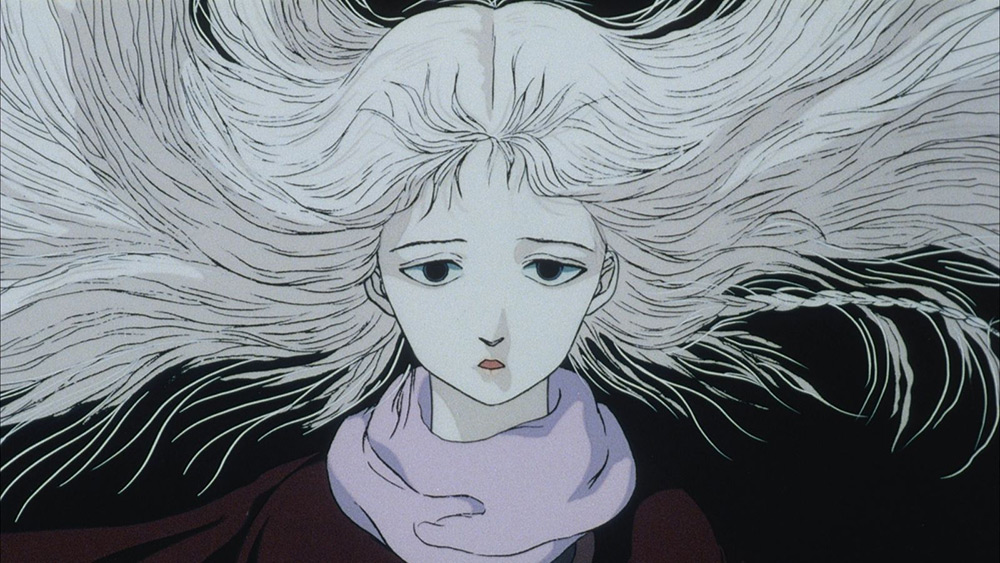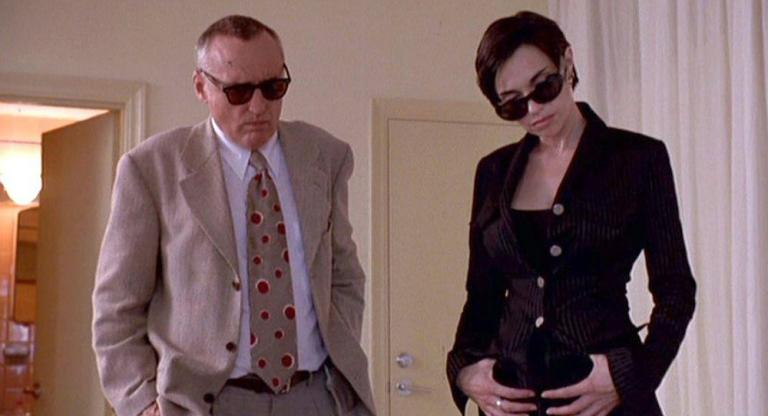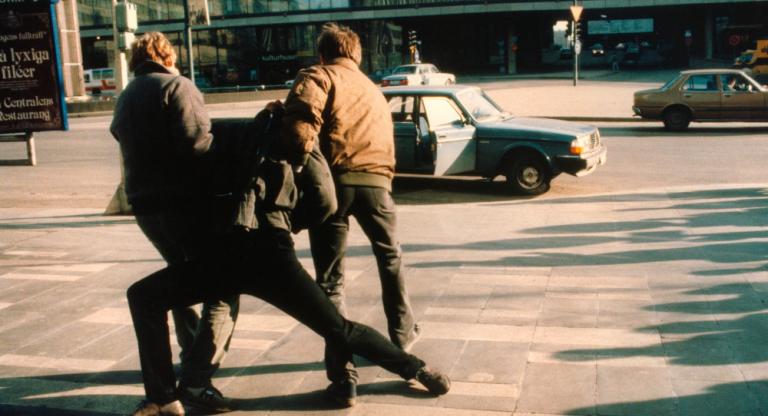The recent 4K restoration of Angel’s Egg (1985), supervised by the film’s legendary director Mamoru Oshii, offers a meticulous presentation of the decaying world he developed in collaboration with the visual artist Yoshitaka Amano. They made a formidable duo: Oshii went on to redefine science fiction anime with Ghost in the Shell (1995) and Amano’s decadent illustration style shaped essential fantasy works like Vampire Hunter D and the Final Fantasy series.
The partnership between Oshii and Amano was so integral to Angel’s Egg that Oshii deliberately stripped the script to its most basic parts in order to allow Amano’s drawings to become the fundamental architecture of the film. Oshii’s concepts were translated directly into storyboards by Amano and later pieced together to organically develop the film’s narrative. The result is a highly comprehensive world built through texture, shadow, and form.
Set in a desolate underwater city haunted by ghosts and the skeletal remains of ancient creatures, the film follows a nameless, pale-haired girl caring for a large egg she believes will one day hatch an angel. Her solitude is broken by the appearance of a boy with bandage-wrapped palms carrying a large cross. As they wander the city together, their interactions are sparse. Conversation is guarded and minimal. The viewer is enmeshed with the pair in this bleak in-between place, where dreams overlap with reality and the very nature of existence is questioned.
Oshii and Amano’s vision of a dying world is rendered through a masterfully limited use of color. The landscape itself is near monochrome: a sea of grays, deep blues, and heavy blacks are populated by impenetrable shadows and silhouetted figures. This deliberate desaturation makes Amano’s sparing use of color quite impactful. The nameless boy and girl provide nearly the only points of warmth in the film’s palette, punctuating space with their pale complexions, soft pinks, and bright reds. They appear as fragile sparks of life in a world both eternal and on the verge of dissipating completely. This atmosphere is complimented by Yoshihiro Kanno’s melancholic score, floating through the ruins like a forgotten memory.
Upon its release and ever since, Angel’s Egg has been praised as an opaque and challenging philosophical work that questions faith, memory, and existence itself while offering no easy answers. It invites viewers to lose themselves in its somber rhythm, remaining a singular experience—a sorrowful dream from which one struggles to wake.
Angel’s Egg screens tonight, November 15, and on November 20, at Metrograph as part of the series “Mamoru Oshii Restored: Origins and Inspirations” before opening at Low Cinema November 21.



